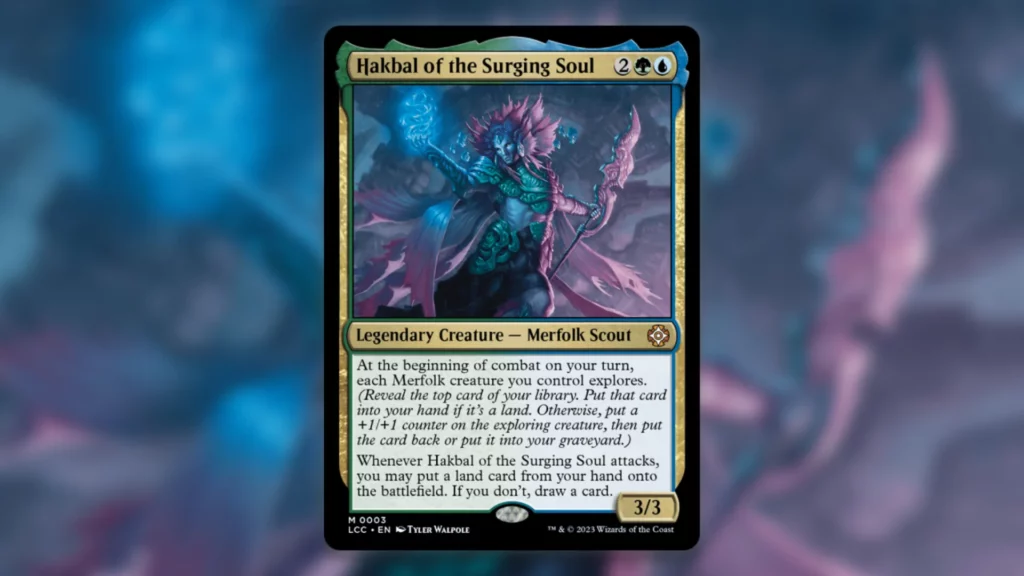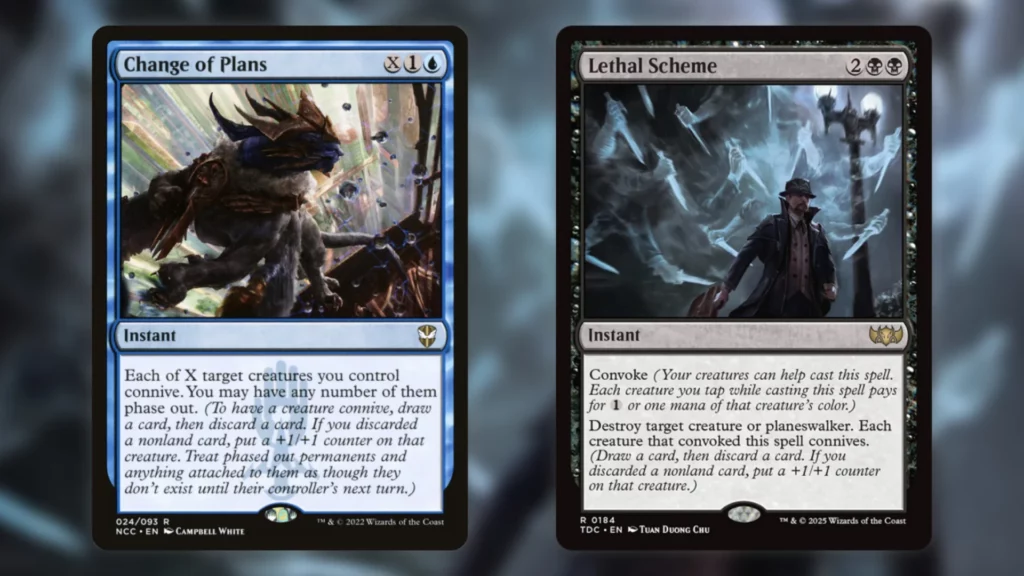Given how old and complicated Magic: The Gathering is as a game, it’s incredible that each new expansion adds even more complexity on top. With the current cadence of products, new mechanics and interactions are entering the game at an alarming rate. On top of that, old ones constantly receive tweaks and adjustments to stay relevant and balanced in the modern game. For example, just this week a rules change affecting the MTG Explore mechanic, and Hakbal of the Surging Soul in particular, was implemented.
This change comes seemingly out of nowhere, since Explore isn’t present in Tarkir: Dragonstorm at all. It is an important clarification, however, for the many, many players who run Hakbal as their Commander. Arriving alongside this change is a similar clarification for the Connive mechanic. This changes the way that a couple of powerful New Capenna cards function. These changes aren’t big or flashy, but they are important to keep in mind if you run these cards.
The Hakbal Rules Change MTG

- Mana Value: 2GU
- Rarity: Mythic Rare
- Type: Legendary Creature – Merfolk Scout
- Stats: 3/3
- Card Text: At the beginning of combat on your turn, each Merfolk creature you control explores. (Reveal the top card of your library. Put that card into your hand if it’s a land. Otherwise, put a +1/+1 counter on the exploring creature, then put the card back or put it into your graveyard.)
Whenever Hakbal attacks, you may put a land card from your hand onto the battlefield. If you don’t, draw a card.
The new Hakbal rules change in question was unveiled a couple of days ago in the Tarkir: Dragonstorm Update Bulletin. Wizards tends to release one of these articles for each new set, and Dragonstorm was no exception. Much of the update concerned the set’s new mechanics, Omen, Behold, etc. However, there was a bit of a wildcard in there too.
Later in the article, it was noted that a new ruling for Hakbal’s “each Merfolk creature you control explores” ability had been added. It’s pretty rare for new rules to be introduced to accommodate just a single card, but at time of writing Hakbal is the only card that makes multiple creatures explore simultaneously. The new ruling reads as follows:
“If multiple permanents are instructed to explore at the same time, the first player in APNAP order who controls (or, in the case of a permanent no longer on the battlefield, last controlled; see rule 701.40c) one or more of those permanents chooses one of them and it explores. Then this process is repeated for each remaining instruction to explore.”
Rule 701.40d, Official Magic: The Gathering Rules, Page 134
This isn’t technically a change, per say, but rather a clarification. No rules existed for Hakbal’s ability before, so now 701.40d is there to fill in the void. Because of how this is worded, each of your Hakbal explores will resolve in one single “chunk,” with no opportunities for players to interact in between. This is the same logic that applies when exploring multiple times on a single creature, as with Jadelight Ranger. Nobody can take actions in between that card’s two explores. Additionally, nobody can take actions in between any of your Hakbal explores.
In practice, this is both a buff and a nerf. Your opponents can’t meddle with your plans midway through, but you, equally, can’t pull off any shenanigans with the cards explore puts into your graveyard. In practice this may not be relevant all of the time, but it does change how Hakbal plays. Given that he’s the most popular Merfolk Commander, and one of the most popular Commanders overall, this change is well worth being aware of.
Jivin’ And Connivin’

Interesting, Hakbal wasn’t the only older card affected by this week’s MTG rules change. Since the two mechanics work very similarly, Wizards took the opportunity to clarify how Conniving across multiple creatures works too. The rule added to explain this is worded exactly the same as the new explore rule:
“If multiple permanents are instructed to connive at the same time, the first player in APNAP order who controls (or, in the case of a permanent no longer on the battlefield, last controlled; see rule 701.47c) one or more of those permanents chooses one of them and it connives. Then this process is repeated for each remaining instruction to connive.”
Rule 701.47d, Official Magic: The Gathering Rules, Page 136
It makes perfect sense that these two mechanics would work the same way, since they’re both actions that creatures take. Conniving across multiple creatures at once is actually more likely than doing so with explore, too. There are two cards that let you do this rather than just one, and one of them sees a lot more play than Hakbal.
These two cards are Change of Plans and Lethal Scheme, both from the New Capenna Commander decks. Change of Plans sees play in 13,437 decks, while Lethal Scheme appears in a whopping 40,936. Hakbal, for reference, is part of 16,959 decks right now. You’re much more likely to play, or run into someone playing, a Lethal Scheme, in other words. For that reason, it’s important to keep this new ruling in mind.
As above, all connives you get from these cards will resolve in a row, with no windows for interaction in between. This stops you from getting fancy with the cards you discard, but it also stops your opponent from burning down your conniving creatures. As with Hakbal, it’s a blessing and a curse. Players can respond to the multi-connive (or explore) trigger going on the stack, however, so do keep that in mind.
Overall, these new rule changes are minor, but it’s good to see them regardless. Magic: The Gathering is an impossibly intricate creation. Updates to older cards like this keep everything running smoothly in the long term.

